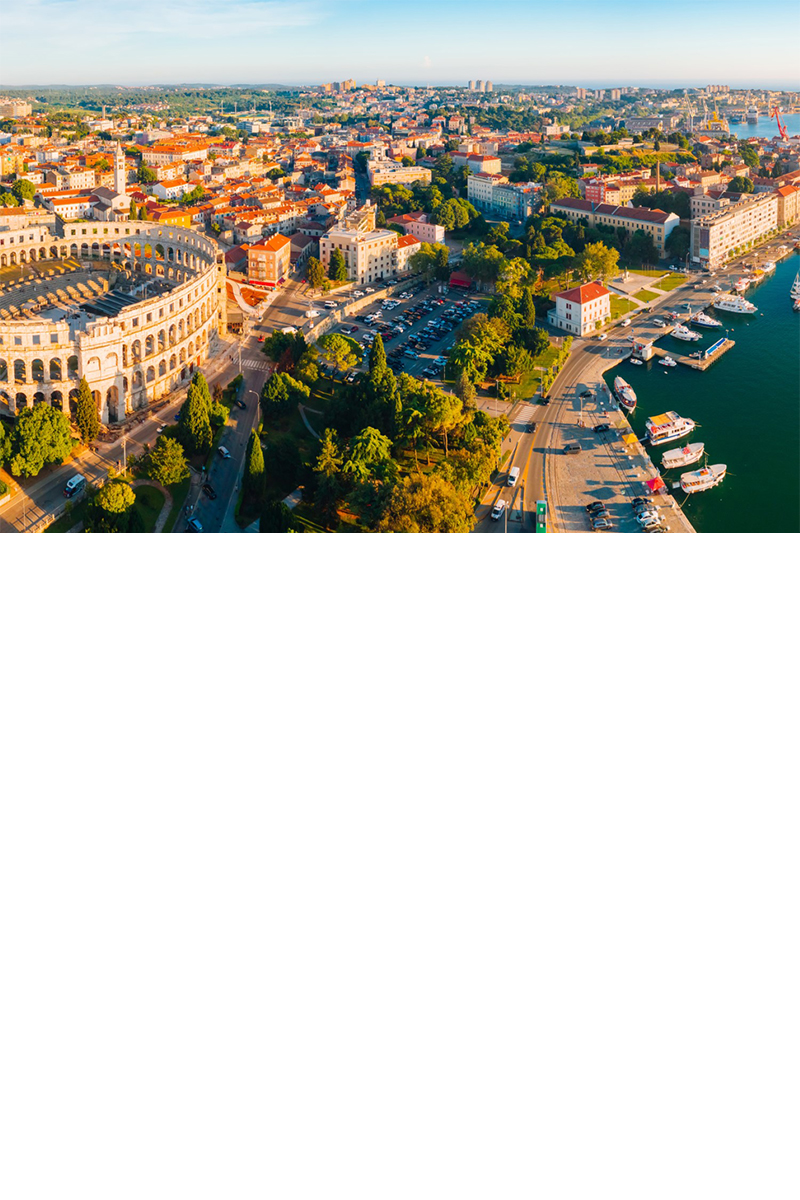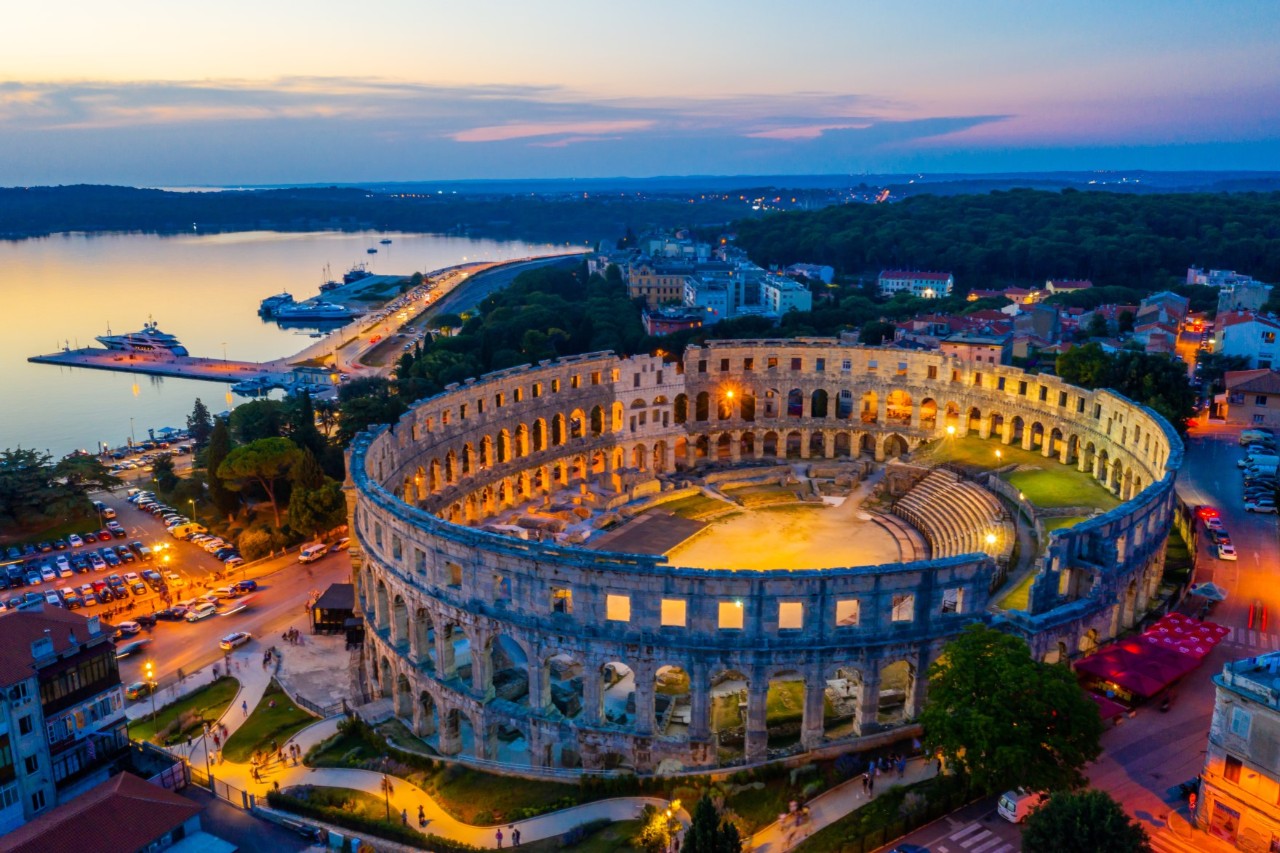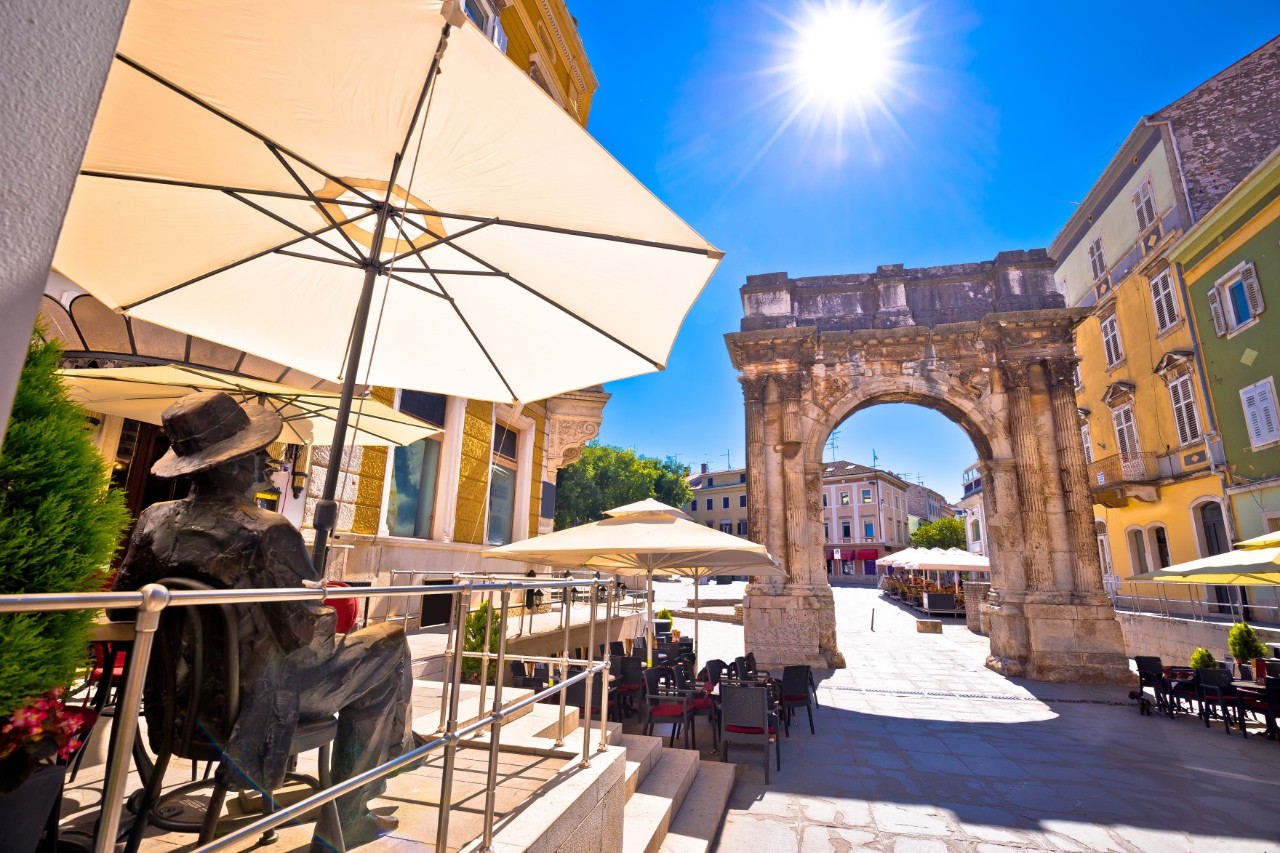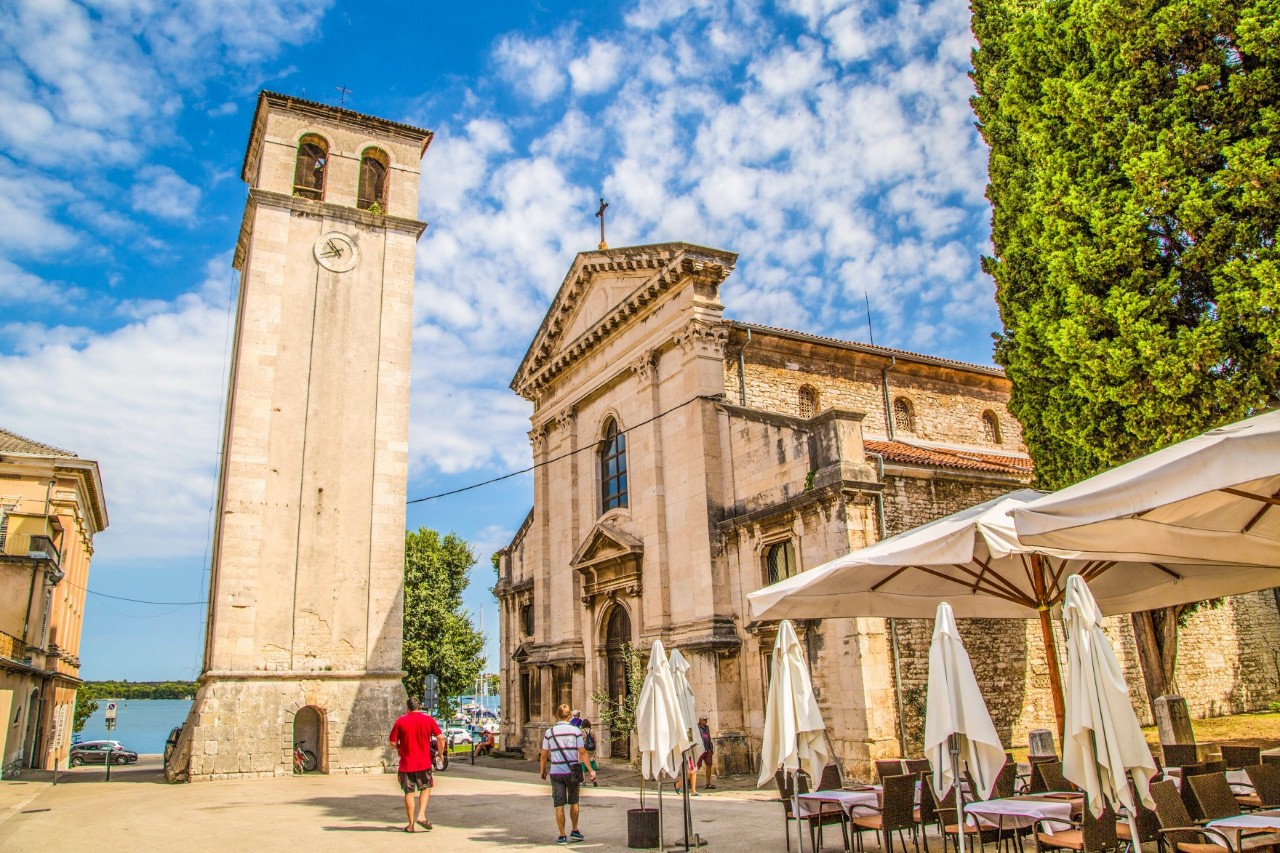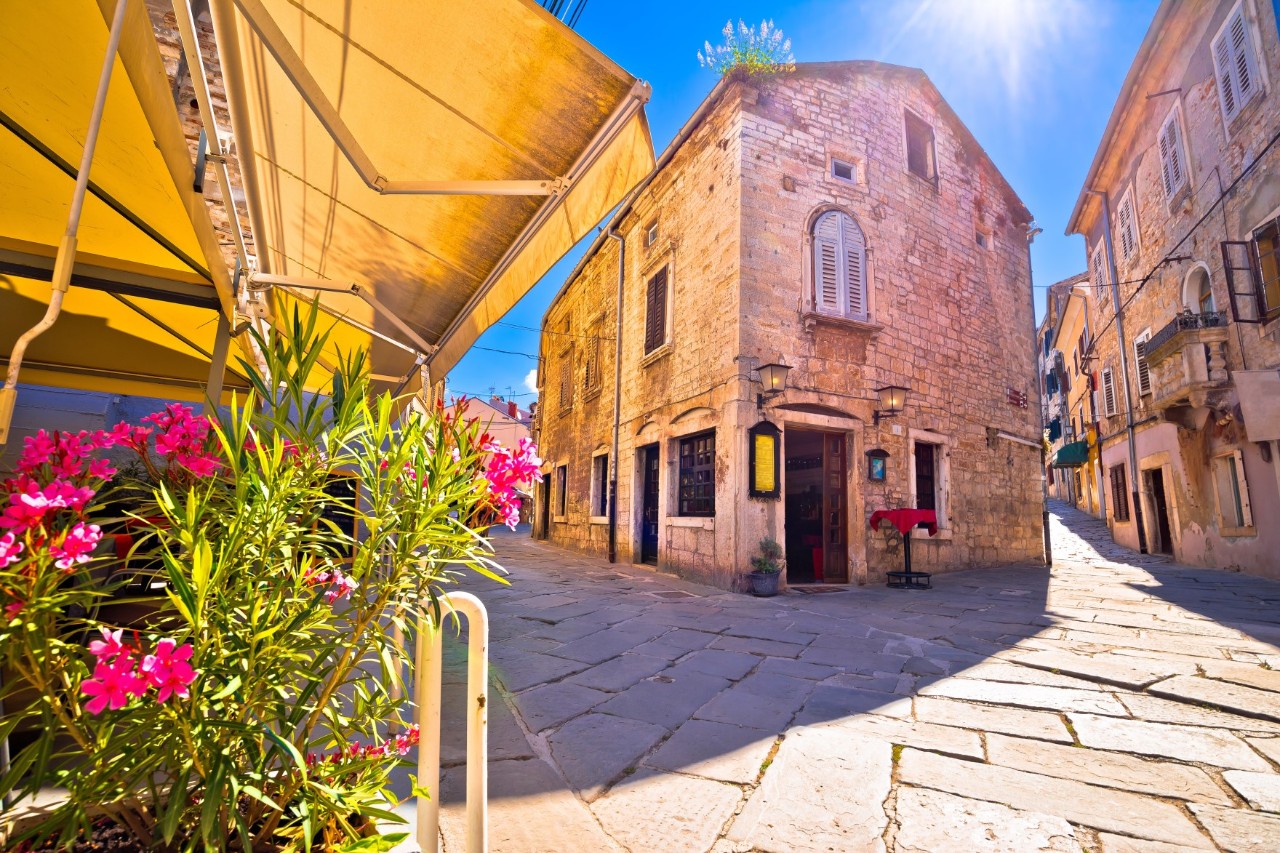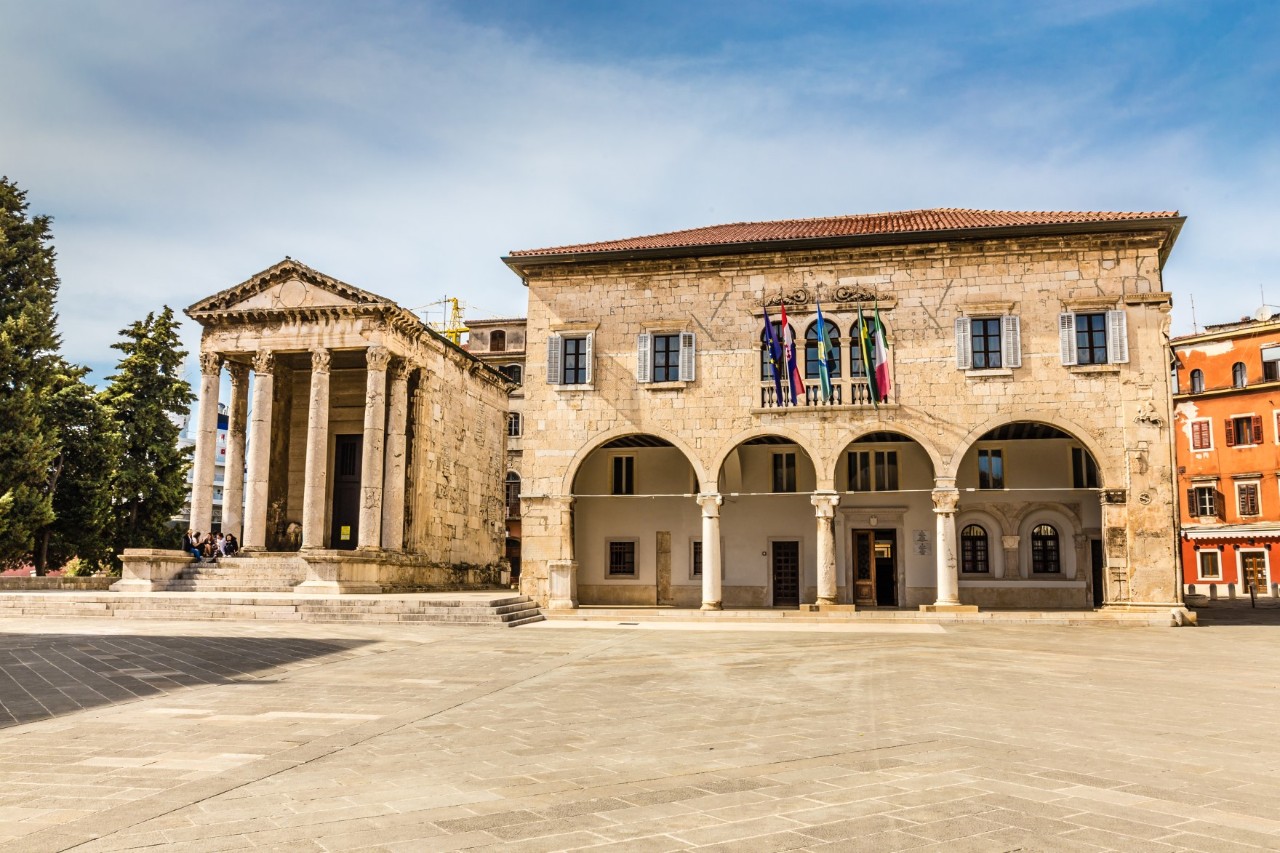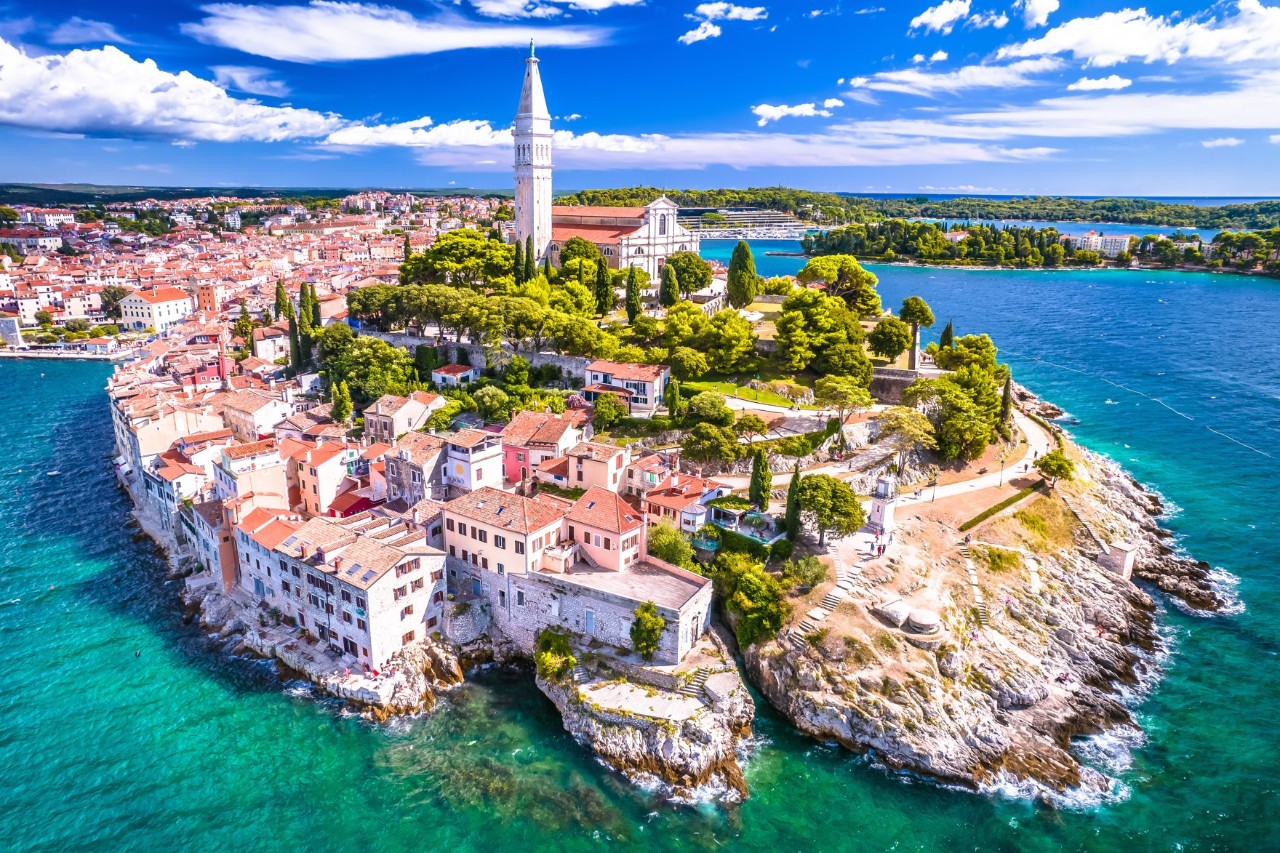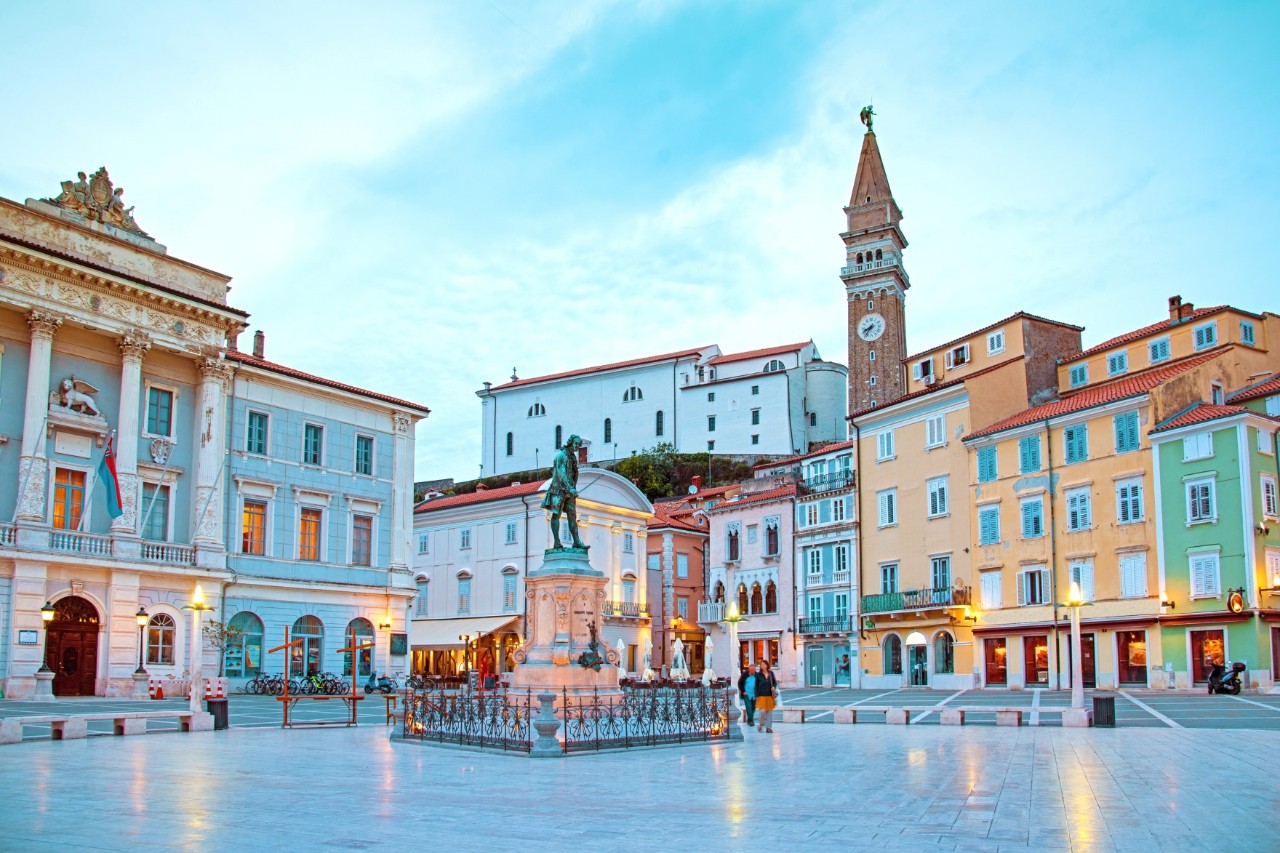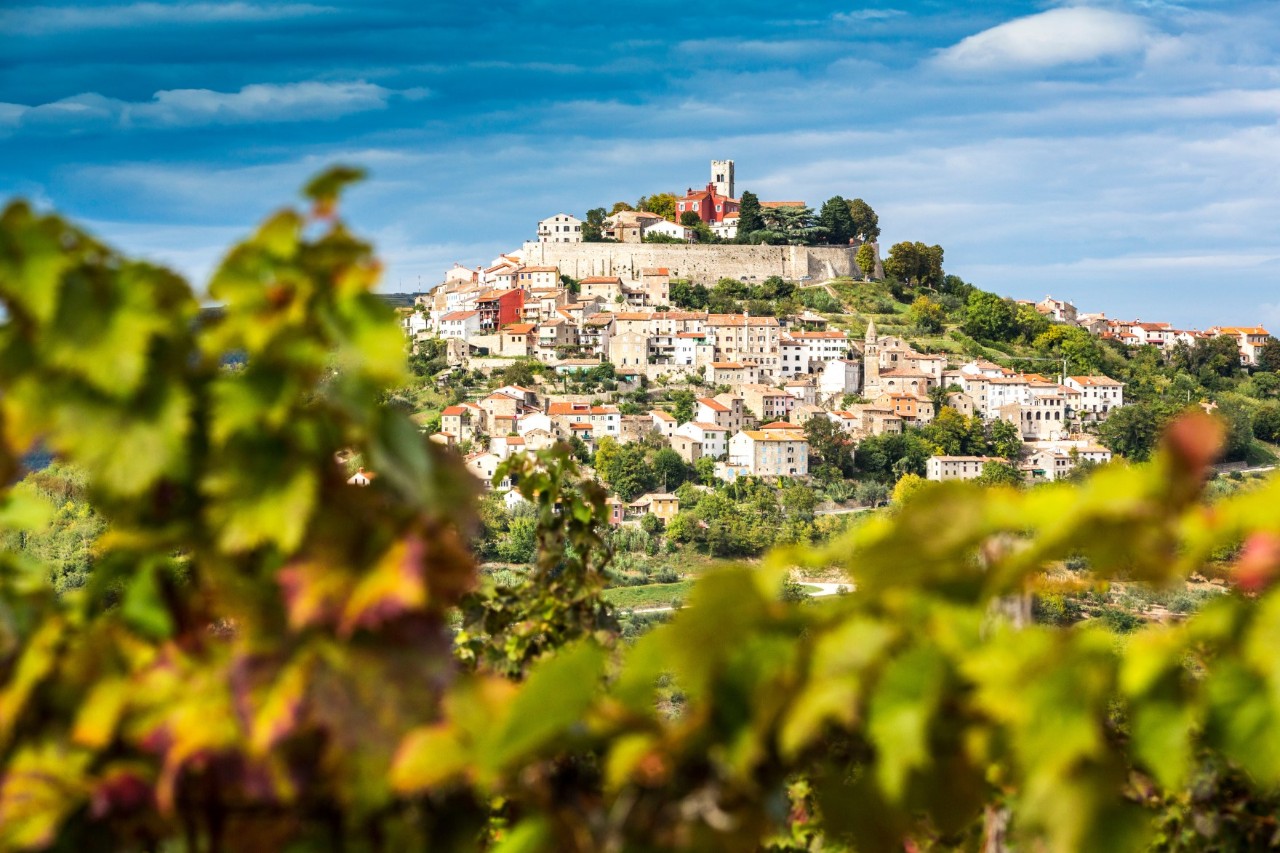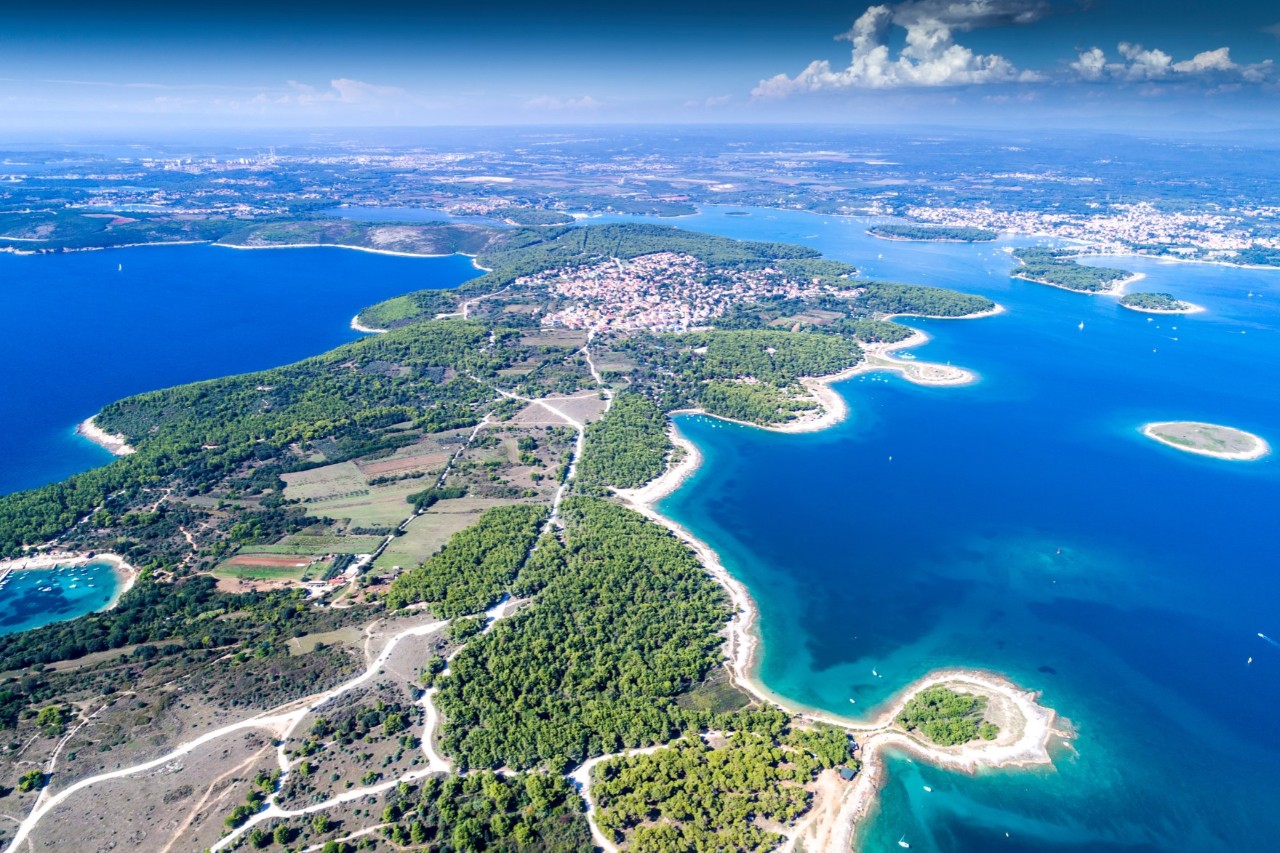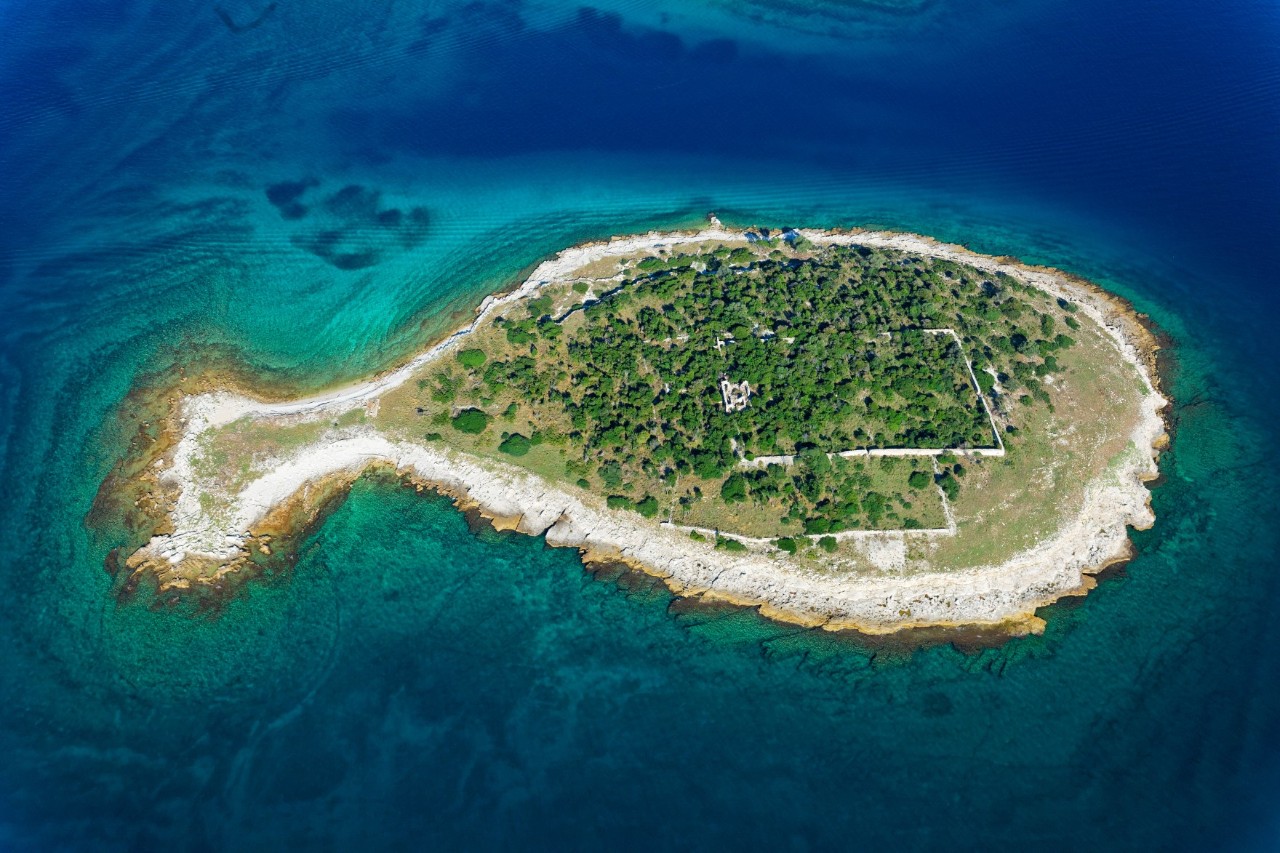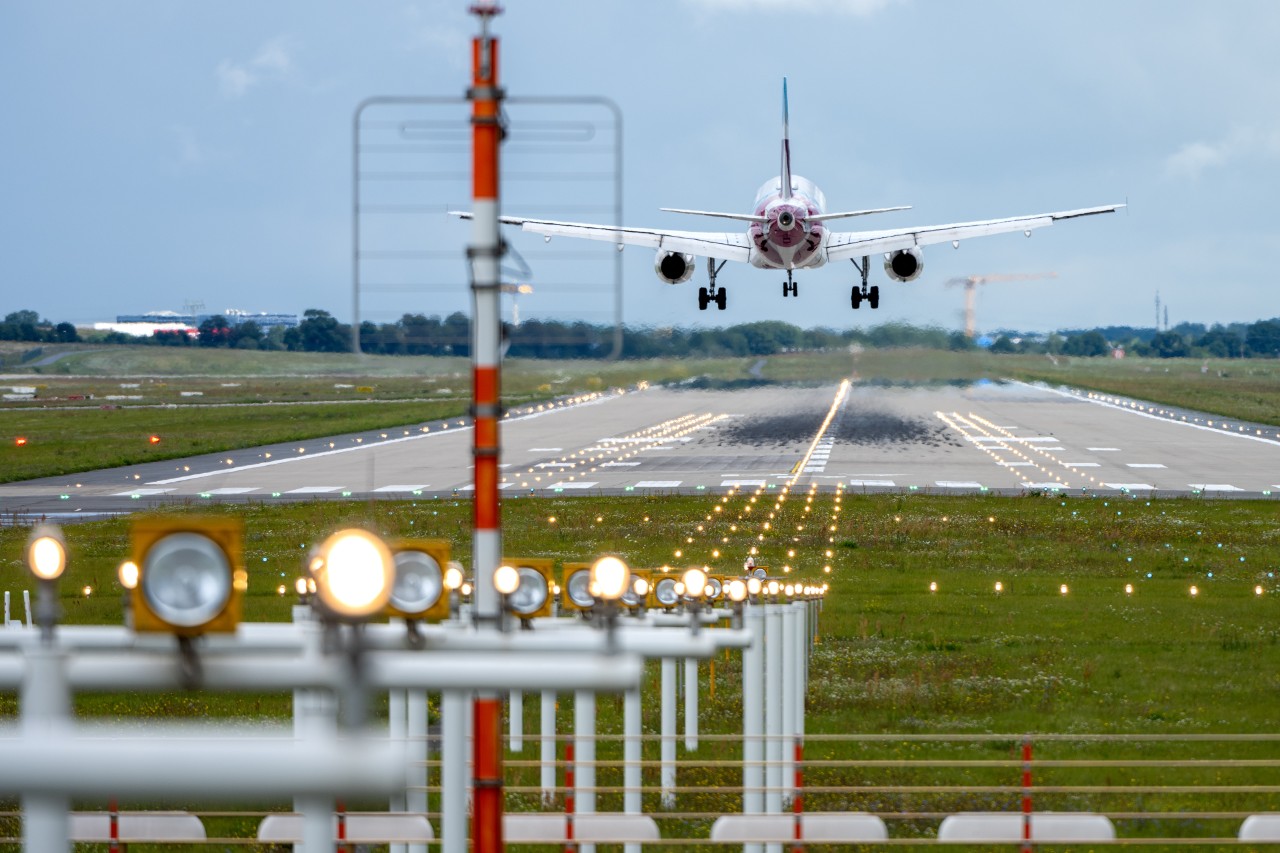The gateway to Istria
Pula is a Croatian Adriatic city with charm and history: If you stroll through the cobbled streets of the old town, you will experience the Italian way of life at first hand. The region's former affiliation with Italy is still visible in Croatian Istria today. The architecture is strongly reminiscent of Italian cities. Typical Mediterranean dishes such as pasta, risotto and pizza are served in the restaurants. Visitors to Pula's imposing amphitheatre will feel as if they have been transported to ancient Rome in this unique setting. Concerts and a film festival are held here on summer nights. Pula is considered the gateway to the Istrian peninsula, a popular holiday region with beautiful beaches, turquoise blue sea and a charming hinterland. With its truffles, fine wines and good olive oils, Istria plays in the top gourmet league.
Numbers, data, facts
- Time difference: none
- Population: 52,000
- Official language: Croatian
- Currency: Euro (EUR)
Pula - Italian flair and ancient treasures
Adriatic coast, truffles and olives: Beautiful Istria
Turquoise blue sea, idyllic pine forests, olive groves and vineyards, picturesque mountain villages in the hinterland - Istria has no shortage of picture-book scenery. The Adriatic coast is lined with rocky coves, steep cliffs and beaches that attract both water sports enthusiasts and sun worshippers. Cape Kamenjak, the southernmost tip of Istria, is a nature reserve with hidden bays and pristine beaches. Another highlight would be the Brijuni Islands, an archipelago and national park known for its rich flora and fauna. Coastal towns such as Rovinj, with its colourful houses and the impressive Church of St. Euphemia, and Poreč, home to the famous Euphrasian Basilica, a UNESCO World Heritage Site, offer a fascinating insight into Istria's history. In the hinterland, the medieval town of Motovun sits enthroned on a hill, surrounded by vineyards and forests where fine truffles thrive.
Turquoise blue sea and UNESCO heritage: five highlights
Pula from BER
- Airline to Pula
- Airport from BER
Five tips for …
1. Visit Buzet - the “town of truffles
2. Experience truffle hunting with sniffer dogs in the forests around Motovun
3. Visit truffle festivals such as the Tuber Festival in Livade
4. Try truffle dishes such as fuži, the traditional pasta with truffles
5. The perfect souvenirs: truffle oils, pastes, and truffle honey
1. Ffuži with truffle: pasta dish with creamy truffle sauce
2. Ćevapčići: grilled minced meat rolls with bread and pickled vegetables
3. Istrian boškarin beef: a speciality, often served as carpaccio
4. Jota: a stew of sour cabbage, beans, and pork
5. Sweet dessert: Kroštule, crispy fried dough strips
1. For families with small children: Beach Bijeca in Medulin
2. Diving and snorkelling: the bays around Cape Kamenjak
3. With a magnificent view of Rovinj: Zlatni Rt (Golden Cape)
4. For fun, games, and food: The long beach in Fažana
5. For those seeking peace and quiet: Lone Bay in Rovinj
Picture Source title:
© Leonid Tit/stock.adobe.com
The information published on this page is current as of the date of publication or update.

